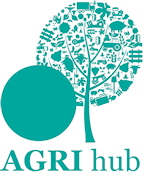 Farming businesses which operate as partnerships should check the legal ownership of their land and update partnership agreements to avoid a hefty tax bill.
Farming businesses which operate as partnerships should check the legal ownership of their land and update partnership agreements to avoid a hefty tax bill.
According to rural accountant Old Mill, many farms retain structures set up in the 1970s, whereby land ownership was moved outside of the partnership and rented back to the business, to reduce Capital Transfer Tax bills (the predecessor to Inheritance Tax) at that time. “However, this may no longer be the most tax efficient option,” says director of rural services, Paul Neate.
“In addition, changes are likely to have been made to the partnership structure over that period, many of which won’t have been recorded by amending partnership agreements. This raises the risk of disputes over land or share entitlements, as well as having capital tax implications.”
In the 1970s owner occupiers could claim 50% relief on Capital Transfer Tax with 30% available to landlords. This encouraged many family landowners to grant their farm partnership an Agricultural Holdings Act tenancy over land held outside of the partnership. This devalued the farm asset for the purposes of assessing death taxes – by up to 50% – plus it also qualified for the 30% tax relief, reducing the chargeable land value to 35% of the vacant possession value.
In contrast, current Inheritance Tax legislation favours property with vacant possession. “Agricultural land can qualify for 100% Agricultural Property Relief, providing it meets certain eligibility tests,” explains Mr Neate. “But non-agricultural assets like rental cottages or rented farm buildings are only eligible for Business Property Relief – and if held outside of the partnership structure may only qualify for 50% relief”
With decreasing farming returns and increasing diversification activity it makes sense to bring such assets back into the partnership structure, to qualify for 100% BPR. “It may well be that you have already instigated such action, but just because your accounts include the farm on the balance sheet, this is not indicative that the assets are actually partnership property,” warns Mr Neate. “You need to refer to the deeds and the Land Registry.”
In addition, where property is owned by the partnership, there may be uncertainty over whether new partners are entitled to a share of that property – or whether outgoing partners have inadvertently made a disposal for Capital Gains Tax purposes. “It is therefore important that you review your partnership agreements and check that legal documentation correctly supports the inclusion of your farm as partnership property, enabling you to fully qualify for the reliefs to which you are entitled.”
- For more information contact Paul Neate on 01225 701224 or visit www.oldmillgroup.co.uk.





